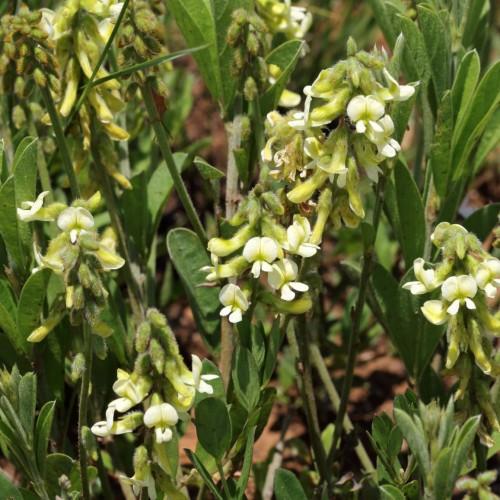
Hillside Milkvetch
Astragalus collinus
Also Known As - Rattle MikvetchWatering:
Minimal
Hardiness Zone:
Sun:
full sun,part shade
Fruits:
Fruits Ready In Summer
Leaf:
Yes
Growth Rate:
Low
Drought Tolerant:
Yes
Salt Tolerant:
Yes
Care Level:
Medium
watering
Hillside Milkvetch is a drought tolerant, low-maintenance, flowering perennial that prefers slightly acidic, well-draining soil in a location with full sun. It should be watered regularly during the growing season. In late spring through early summer, water deeply once each week. During the hottest months reduce the water to once every 2 weeks. Toward fall, reduce the watering to once a month. In winter, when the plant is dormant, no watering is needed.
sunlight
Hillside Milkvetch thrives best in full sun. During the spring and summer months, this plant species needs 8-10 hours of direct sunlight each day for optimal growth. During the fall and winter, Hillside Milkvetch can still thrive with at least 4-6 hours of daily sunlight. It's important to note that winter sunlight is typically lower in intensity, so the plant will need supplemental lighting or shade if kept indoors.
pruning
Pruning of Hillside Milkvetch (Astragalus collinus) can be done in early spring to help stimulate growth and promote better flowering. The plants should be pruned to around 5 inches and should be cut back to the new growth. It is important to remove spent flower stems and any dead or diseased wood to keep the plant healthy. It is recommended to prune only a third of the total stem length, and not to prune too deeply. Doing so may cause damage to the plants and can also reduce flowering. Pruning can be done using pruning shears or pruning saws, but be aware that the stems may snap off rather than cut nicely. In addition, pruning should be done sparingly, as too much pruning can kill off the plant. It is also important not to prune the plant in the fall or late summer as this could cause the plant to not survive the winter, or cause weak flower production.
